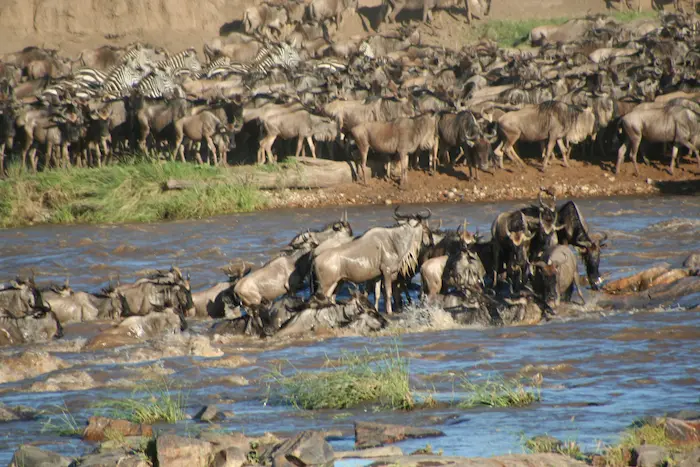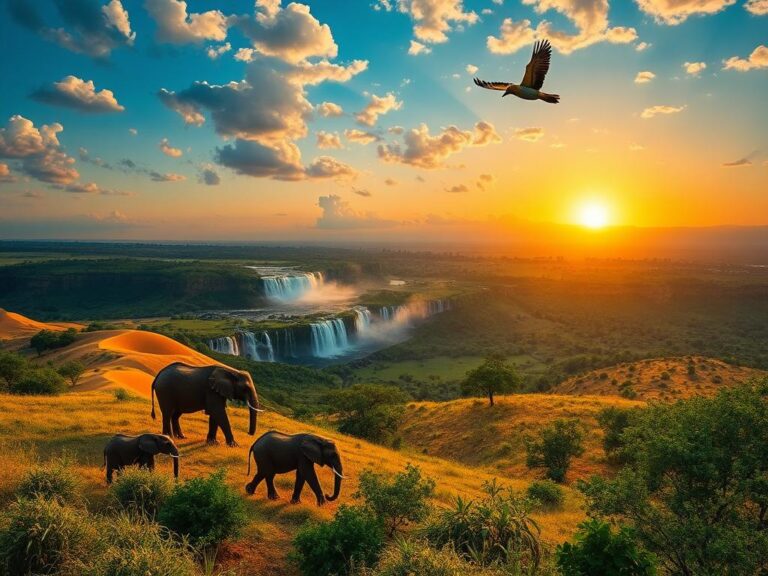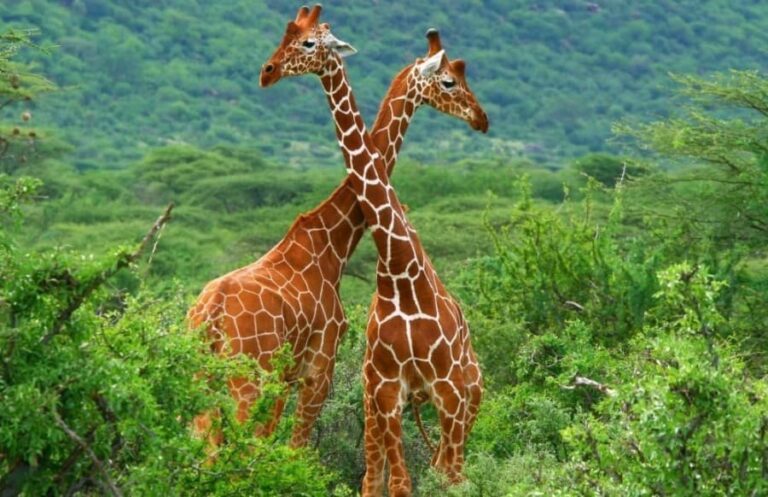
Best Time for Safari in Kenya and Tanzania: Discover Natural Wonders
Best time for safari in Kenya and Tanzania can significantly enhance your wildlife and adventure experience.
These East African countries are treasure troves of breathtaking landscapes and diverse ecosystems.
As a dream expert, it is my pleasure to guide you through the best times to embark on a safari, ensuring unforgettable moments.
From the Great Migration to the serene atmosphere of the rainy seasons, understanding the timing can elevate your journey.
A Safari Worth Dreaming About
The safari experience in Kenya and Tanzania is a blend of anticipation, excitement, and unforgettable sightings.
Wildlife enthusiasts flock to these countries year-round, but certain periods offer a heightened sense of adventure.
The rich tapestry of wildlife dynamics, climatic variations, and geographical feature changes paint a vivid picture of natural wonders.
Whether your dream is to see the iconic Big Five or the stunning a variety of exotic birds, there’s always a special time to visit.
As some will say, “The real Africa comes alive.” So, what time is the best for a safari? Let’s explore.
The Great Migration: A Spectacular Event (July to September)
The Great Migration is documentary-worthy and majesty personified. From July to September, millions of wildebeests and zebras traverse through the Serengeti in Tanzania and into the Masai Mara in Kenya. This awe-inspiring event captures the essence of life as these creatures battle predators and the elements in search of greener pastures.
Statistics reveal that nearly 1.5 million wildebeest accompany around 200,000 zebras on their annual journey. This act of nature showcases survival and the cyclical rhythms of life.
“Wildlife doesn’t care about our timelines.” says famed safari guide, David Youldon, “It’s about respecting their routes.”
This is a stunning time for photography, ensuring every snapshot is an epic moment frozen in time.
Witnessing river crossings filled with tension as the animals dodge crocodiles is a thrilling spectacle. It is no wonder that this timeframe attracts so many travelers.
The Perfect Weather for Game Viewing (June to October)
During the months of June to October, Kenya and Tanzania experience dry and cooler weather, creating ideal conditions for wildlife viewing.
Wildlife tends to gather around limited water sources, becoming easier to spot against short vegetation.
Bird lovers will also find joy in observing over 500 bird species during this time as migratory birds flock to these regions.
Many travelers will tell you that this dry season is magic. “Wildlife viewing during the dry season is what every nature lover dreams of,” exclaims conservationist Jane Goodall.
The landscapes during this period create vibrant contrasts, making every safari drive a visual treat.
Calving Season: A New Beginning (January to February)
One cannot overlook the beauty that unfolds during the calving season, occurring between January and February.
Glimpse the miracle of life as thousands of wildebeest calves are born in the Serengeti.
Witnessing these newborn calves takes the safari experience to another level. It is filled with excitement, drama, and moments full of life.
This period is characterized by predation as new life attracts predators like lions and hyenas, offering thrilling encounters. Thus, the cycle of survival is on full display.
As travel blogger Sarah Morrow tells us, “The joy of witnessing life’s beginning amidst an African backdrop is unforgettable.”
Bird Watching Season: A Colorful Spectacle (November to April)
For avian enthusiasts, the months from November to April are ideal for birdwatching. African landscapes transform, with migratory birds gracing the region.
With vibrant feathers and melodious songs, the diverse bird species will captivate any nature lover.
Some of the notable migratory birds include the European bee-eater and the white stork.
Annual events, like the Great African Birding Challenge, gather birdwatchers to celebrate Africa’s avian diversity, promoting awareness for conservation efforts.
The Short Rains: An Intimate Experience (November to December)
The short rain season from November to December presents a serene side of the safari. Though there may be occasional precipitation, the landscapes are lush, and fewer tourists create a tranquil atmosphere.
During this time, the wildlife is still active, and the scenery also showcases stunning greenery as animals disperse into smaller groups.
It’s an excellent time for an intimate safari experience, allowing visitors to connect deeper with the surroundings.
As local guides often point out, this is a time for those who cherish solitude. The fewer crowds mean an enhanced connection to nature, making every moment special.
The Long Rains: Serenity in March to May
Although March to May marks the long rains season, this period can be an exciting adventure.
Wildlife is still active; however, expect fewer visitors, allowing for unspoiled wildlife encounters.
While the dense vegetation makes it slightly harder to spot animals, the vibrant landscapes offer a different perspective of nature’s beauty.
It’s all about the thrill of the unexpected, as saying, “Expect the unexpected” rings true in this season.
Consider visiting during the rains if you appreciate the sound of raindrops dancing on the roof of a safari vehicle or the smell of wet earth.
Special Occasions: Full Moons and National Park Events
Full moons throughout the year create a magical ambiance for night safaris. The illuminated nightscape provides great visibility, allowing you to spot leopards and other nocturnal creatures in action.
Additionally, national park events held year-round can enhance your experience significantly.
Activities like conservation safaris, cultural festivals, and ranger-led events engage travelers while championing local cultures and conservation efforts.
“Connecting travelers to communities is equally as important as wildlife.” states renowned conservationist, Dr. Richard Leakey.
Personal Preferences and Your Ideal Safari
Ultimately, the best time for your safari hinges on your unique interests and what you wish to see.
Some prefer the excitement of witnessing the Great Migration, while others may find comfort in the stillness of the short rains.
Consider advocating for personal interests when planning. For example:
- Adventure-seekers may thrive in the dry season amidst countless wildlife sightings.
- Those inspired by photography might favor calving season or full moons.
- Bird lovers should prioritize bird watching season for vibrant colors and unique species.
Conclusion: Your Adventure Awaits
Understanding the best time for safari in Kenya and Tanzania enriches your portfolio of unforgettable moments.
Whether you are driven by the pulse of migration, enjoy lush landscapes, or seek an intimate experience, knowledge is key.
Kenya and Tanzania offer an array of unforgettable adventures; the choice is yours!
Regardless of your preferences, immersing yourself in nature’s wonders unfolds a heartwarming connection.
So pack your bags, plan your trip, and let the rhythm of Africa decide your next adventure!
FAQ
What is the best time to witness the Great Migration?
The best time to witness the Great Migration is from July to September, when millions of wildebeests and zebras migrate from the Serengeti to the Masai Mara.
When is the calving season for wildebeests?
The calving season for wildebeests occurs from January to February, providing fantastic opportunities to observe newborn calves alongside their mothers.
What should I wear during a safari in Kenya and Tanzania?
It is recommended to wear neutral colors, comfortable clothing, and layers to adapt to temperature changes. A good pair of binoculars, sunblock, and a hat are also advisable.
Is it safe to go on safari during the rainy season?
Yes, safaris during the rainy season can be safe, though wildlife sightings may be more challenging. The rain brings beauty, fewer crowds, and the opportunity to experience a lush environment.
Can I experience birdwatching year-round in these countries?
While you can observe numerous bird species year-round, the peak birdwatching season is from November to April when migratory birds flock to the area.
Share your thoughts and experiences in the comments below. Have you visited Kenya or Tanzania for a safari? What was your most memorable moment?


